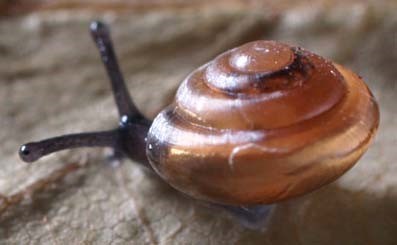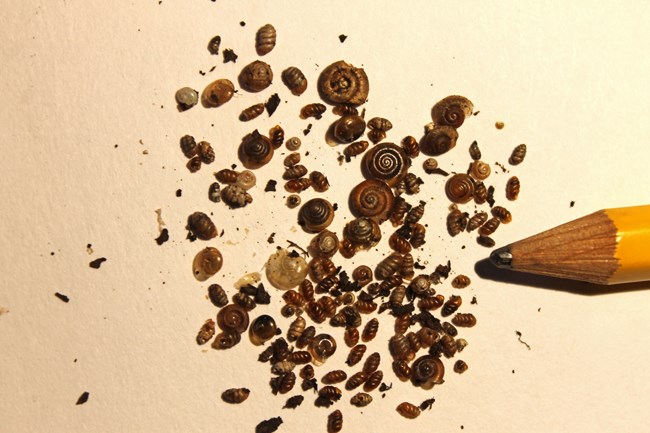Part of a series of articles titled The Midden - Great Basin National Park: Vol. 16, No. 1, Summer 2016.
Article
Land Mollusks of Great Basin National Park
This article was originally published in The Midden – Great Basin National Park: Vol. 16, No. 1, Summer 2016.

Photo Submitted by the author
Land snails and slugs are important invertebrate inhabitants of woodland litter and soils, boulder and talus slides, riparian meadows, and vegetation around springs throughout the Great Basin. These land-inhabiting invertebrates play critical roles in these mountain habitats such as decomposing dead plant material for use by bacteria and fungi, recycling important biological nutrients such as calcium and nitrogen, passively transporting fungal spores through litter, and providing an essential source of calcium and protein for bird and mammal predators.
Now in the last season of a three-year survey (2014-2016), the species diversity, habitat preferences, and population densities of land snails and slugs are being surveyed throughout the park. To date a total of 17 species of land snails and one species of slug have been recorded. The smallest land snail in the park is the Small Spot at only 1.5 mm in shell diameter, while the largest of the land snails is the Great Basin Mountainsnail which has a shell range of 20 to 30 mm in diameter. The columnar (elongate coiled) land snails such as the Cross Vertigo and Crestless Column range in height from 2 to 5 mm while the heliciform (round coiled) snails such as the Silky Vallonia and Quick Gloss range from 3.5 to 5.6 mm in diameter.

Photo submitted by the author
While the land snail communities described above depend primarily on mesic woodland and shrub habitats, some species tend to be habitat specialists. For example, both species of Mountainsnails and the Montane Snaggletooth depend on limestone boulder and talus fields with a shrub and grass cover. Other species, such as the Meadow Slug, the two species of Amber snails, and the Cross Vertigo, are restricted to wet meadows and springs.
The species diversity and habitat preferences found in the park during this survey are similar to those found in other high elevation mountains throughout the eastern Great Basin such as the Deep Creek Range to the north along the Utah border, the Ruby Mountains to the Northwest in northeastern Nevada, and the Schell Creek Range to the west of the Snake Range.
Last updated: March 18, 2024
